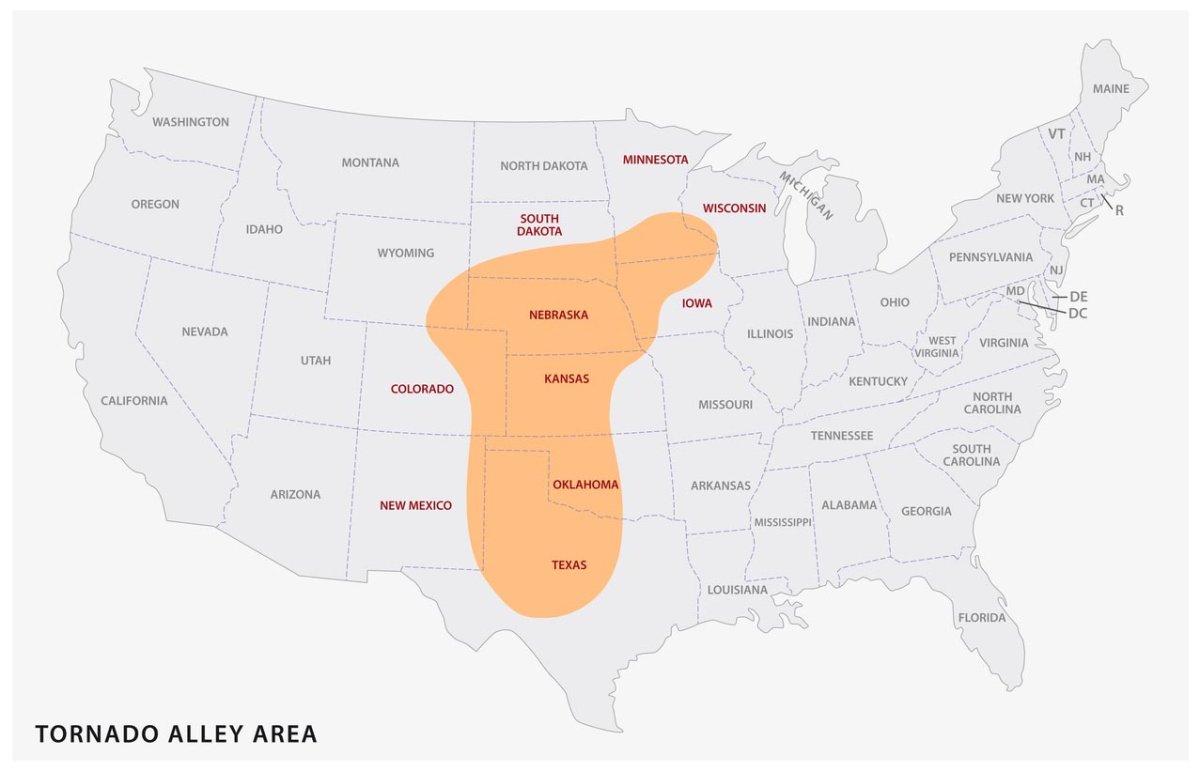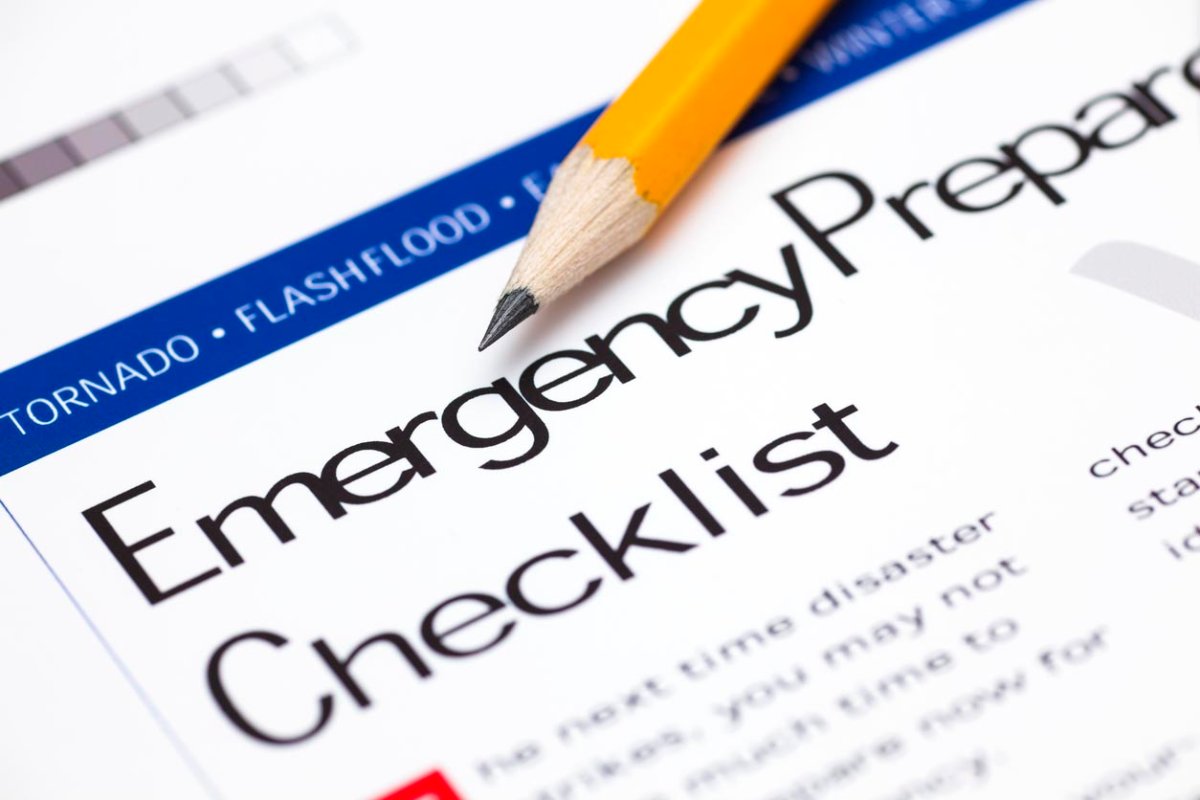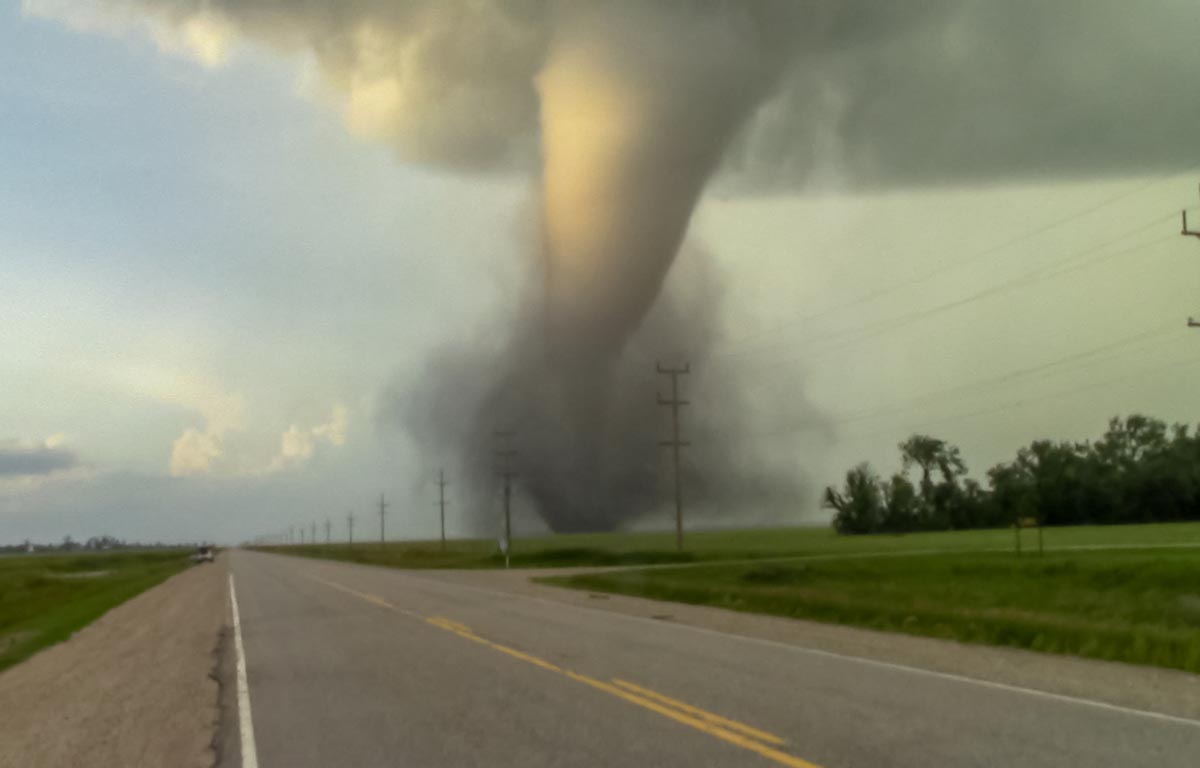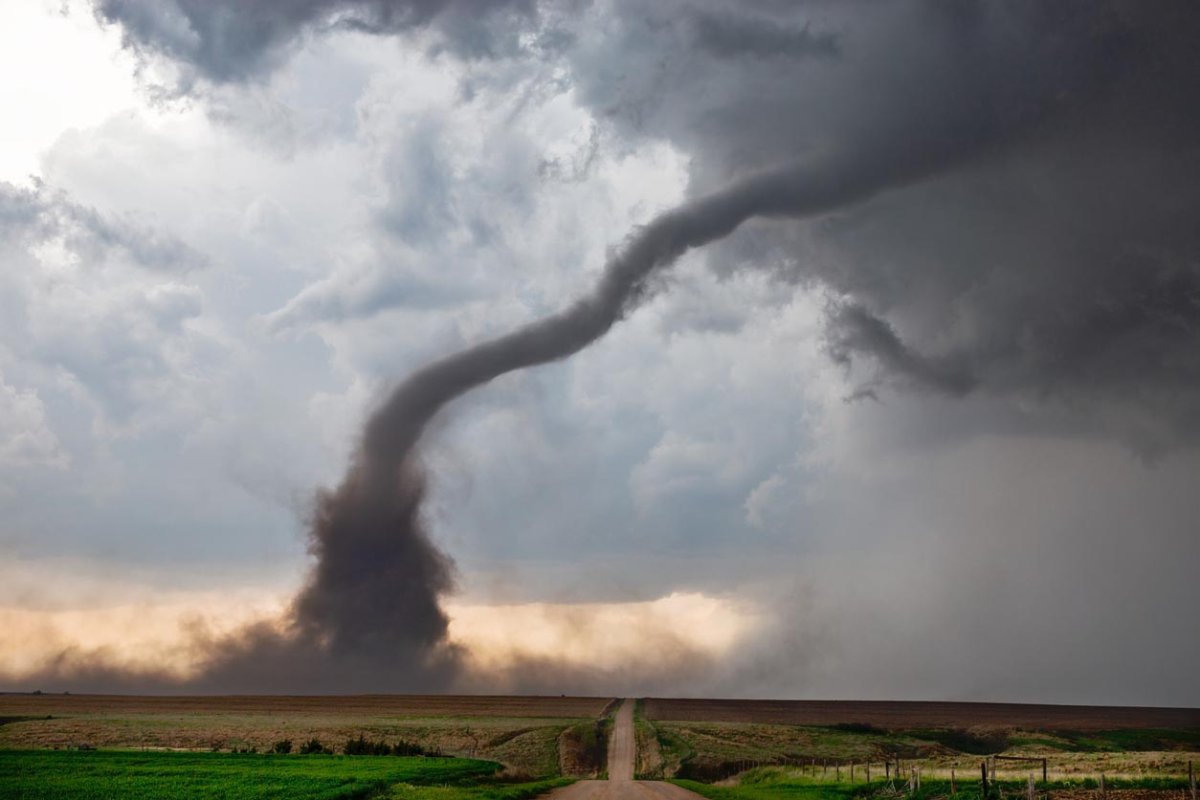We may earn revenue from the products available on this page and participate in affiliate programs. Learn More ›
Peak tornado season is between March and May, but a twister can occur at any time of the year. And tornadoes aren’t limited to a specific geographic location; they can occur just about anywhere in the country. In years past, though, the Great Plains region saw more tornadic activity than other regions, earning it the nickname “Tornado Alley.”
“There have been some tornadoes in Iowa and Wisconsin a couple of weeks earlier than the historical average,” explains Paul Pastelok, lead long-range forecaster at AccuWeather. “That can occur at times, depending on the overall weather pattern and warmer temperatures. For areas like Missouri, Kansas, and Oklahoma, late April into early May is about the peak time for tornadoes.”
But in recent years, there seems to be a higher concentration of tornadoes in the Southeast and Midwest than there used to be. Is Tornado Alley shifting eastward? And if so, what is causing this shift away from the original Tornado Alley?

Where is the “New Tornado Alley”?
Tornado Alley has traditionally referred to an area around the Plains States: Kansas, Missouri, Oklahoma, and Texas. But so far in 2024, states such as Ohio are giving Tornado Alley a run for its money when it comes to confirmed tornadoes.
According to the National Weather Service Storm Prediction Center (SPC), Texas experienced an average of 124 tornadoes per year between 2003 and 2022, while Kansas experienced an average of 87 per year. During that same time period, Ohio experienced an average of 23 tornadoes per year.
Preliminary SPC data from January 1 to May 9, 2024, shows that 670 confirmed tornadoes have touched down in the U.S. this year, with 35 additional storms under investigation for tornadic activity. Fifty-four of those confirmed tornadoes touched down in Ohio—a 135 percent increase over the average number of tornadoes in Ohio between 2003 and 2022.
Meanwhile, Texas has seen 68 confirmed tornadoes in 2024 so far, while Kansas has seen 56 and Oklahoma has seen 48. Those numbers represent decreases of 45 percent, 45 percent, and 27 percent, respectively. It’s important to note that tornado season is far from over, so Tornado Alley has time to catch up—but it seems unlikely to happen this late in the spring.
Other states have seen an increase in tornadic activity over the last few decades. In recent years, areas in the Southeast have seen more tornadoes than they used to, with powerful twisters touching down east of the Mississippi River in states such as Mississippi, Tennessee, Alabama, Arkansas, and Louisiana.
That’s not to say that tornadoes no longer happen in the area that’s traditionally been considered Tornado Alley; Texas, Oklahoma, and Kansas still see more tornadoes than states in the west or north of the country, such as California or Montana. Rather than saying Tornado Alley is shifting to the east, it may be more accurate to say that the area that experiences frequent tornadoes is expanding to include more areas such as the Southeast and the Midwest.
“Tornadoes have been documented in all 50 states,” says Pastelok. “Everyone needs to have a severe weather plan.”
Why is Tornado Alley shifting?
Tornadoes occur when the atmosphere is unstable. In order for a thunderstorm to produce a tornado, there must be warm, moist air near the ground and cool, dry air above. In these conditions, a thunderstorm will have strong updrafts of air, which can then start to rotate if the winds are slow close to the ground and fast higher up. From there, a type of storm called a supercell can form—and supercells are known for producing tornadoes.
Not all supercells will produce tornadoes, though. While the supercell draws the warm and moist air upward, it can also produce precipitation, which creates cool downdrafts. This can then create a funnel cloud, which becomes a tornado when it touches the ground.
Historically, conditions in the area known as Tornado Alley were perfect for producing supercell thunderstorms. But a lengthy drought in the West means higher pressure and drier air over Texas and the plains. This then pushes moist air east, causing additional atmospheric instability in the Southeast and Midwest.
Climate change is also responsible for the upswing in severe weather events such as tornadoes. Increasing global temperatures are warming the Gulf of Mexico, which then releases more water vapor into the atmosphere in the Southeast, creating even more atmospheric instability. And milder winters in the Midwest are creating an unstable atmosphere earlier in the year than usual, which creates conditions ideal for supercell formations.
“The long-term drought in the Southwest and warming waters in the Gulf of Mexico are a few factors being influenced by climate change, which are having impacts on severe weather intensity and the locations where it’s happening,” explains Pastelok. “Waters in the Gulf of Mexico continue to warm rapidly in mid to late spring. These severe weather events could continue to get stronger over the years.”
Ultimately, time will tell whether the expansion of Tornado Alley is the new normal, or if there’s another shift coming in the next few years or decades.

5 Key Ways to Prepare for Tornado Season
It’s notoriously difficult for a meteorologist to predict where a tornado will occur. Therefore, a homeowner’s best defense against tornadoes is to be prepared, even if they live in an area that traditionally has not seen much tornadic activity. “People in those states can expect most spring and early-summer months to be quite active, and they need to be prepared even more for severe weather,” explains Pastelok. These five tips can help homeowners prepare themselves and their homes for the worst.
1. Check your homeowners insurance coverage.
When a tornado strikes, homeowners insurance can help policyholders cover the cost of home repairs. But it’s vital that homeowners understand what their policy covers and how much coverage they have.
“Understanding your homeowners insurance policy is the single-most important first step,” explains Jim Fults, vice president of insurance product management at Hippo, an insurance company that specializes in homeowners insurance. “Pay close attention to your deductibles, coverage limits, and exclusions. Most homeowners insurance policies cover damage from tornadoes and hurricanes.” Fults also mentions that coverage extends to other structures, such as toolsheds and carports.
In addition to understanding the type and amount of coverage they have, homeowners will need to check whether items that have policy limits, such as jewelry, sports equipment, musical instruments, antiques, tools, firearms, and other collectibles, are adequately covered—and how they will receive reimbursement for those items. “If you own many valuable artworks or electronics, check that your supplemental policies cover the replacement costs of these items, versus reimbursement only for the ‘actual cash value,’ which covers the depreciated value only,” advises Fults.
Fults also recommends that homeowners check their policy each year before renewal to make sure their coverage still suits their current needs. “Most standard homeowners insurance policies renew on an annual schedule,” he explains. “By regularly reviewing and updating your coverage, you’ll have the appropriate financial protection needed from your insurance provider for tornado damage.”
Fults says that most standard homeowners insurance policies will cover tornado damage. However, homeowners may need to add extra coverage to ensure that they’re fully protected in the event of a tornado. “More frequent and severe weather events occurring across the country have led to an increase in homeowners having to change their deductible or purchase additional ‘windstorm coverage,’” explains Fults. “This specialty coverage is typically available in states with higher risk of tornado activity.”
Pastelok agrees, advising homeowners to review their insurance policies to ensure they understand exactly what is and isn’t covered. “It’s a good idea to take photos of your home, car, and important belongings, and securely upload them to the cloud,” he advises. “Having digital documentation can be incredibly helpful with insurance claims if your home is ever hit by a tornado.”
- Thinking about switching your coverage? See all the best homeowners insurance companies, including Allstate and Lemonade.
2. Consider home improvements that will make your home more resilient.
Homeowners who live in areas that are experiencing more frequent—or stronger—tornadoes will want to consider what they can do to their home to make it more resilient to severe weather.
“Maintain your home’s structural integrity,” advises Fults. “Unlike hurricanes, which can fully uplift a roof from a house regardless of the age or condition of that roof, tornadoes—and the heavy hailstorms and extreme winds that accompany them—can often collapse roofs inward or shatter them to pieces due to sheer force.”
This is especially true for older homes or those with aging roofs. “It’s imperative to maintain your roof and outer facades of your home in order to mitigate this risk,” says Fults. “Initial home inspections can help determine your timeline of needed repairs and maintenance, while annual and seasonal checks help keep you ahead of the storm.”
Homeowners without a basement may want to consider building a storm shelter on their property. A storm shelter costs around $7,600 to build on average, but that could be money well spent if a large twister hits a home without a basement.
3. Know the difference between “tornado watch” and “tornado warning.”
When a thunderstorm with the capability of producing tornadoes is in the vicinity, homeowners will receive a weather alert from their weather radio or cell phone. But many people find the difference between a tornado watch and a tornado warning confusing. That’s why it’s essential for homeowners to familiarize themselves with the meanings of different weather warnings.
- A tornado watch signals that there is a thunderstorm capable of producing tornadoes in the area. Homeowners don’t need to evacuate to their safe place for a tornado watch, but they need to be weather aware and prepared to move to the basement or a windowless area if they hear tornado sirens.
- A tornado warning means there is a confirmed tornado in the area. This is the signal for homeowners to move to their safe places and take cover immediately.
Sirens may also sound during a tornado warning, though it’s inadvisable for homeowners to rely on sirens alone since not everyone will hear this warning. Instead, homeowners will want to allow weather notifications on their phones and invest in one of the best emergency radios for up-to-date notifications.
“Tornado warnings can be scary for families, especially with young children,” says Pastelok. “Take the time to review and practice safety drills, and make sure there are plenty of snacks, bottled water, and a few toys in your shelter or safe space.”

4. Designate a safe place in your home and stock it with an emergency kit.
It’s always smart to be prepared for the worst—even if the worst is a very slight possibility. No matter their location, homeowners will want to be prepared to handle extreme weather such as tornadoes. “Plan to protect the people in your home, should you need to hunker down during a storm,” advises Fults.
According to Pastelok, “Basements, storm shelters, and interior rooms save lives when tornadoes strike. If a tornado warning is issued, you want to get to the lowest, most center room of a sturdy building. Get as far away as possible from exterior walls, doors, and windows.”
Homeowners will want to keep items such as brooms, shovels, axes, and steel-toes boots in their safe location as part of a tornado safety kit. If the tornado is strong enough to demolish a home and the residents are hunkered down in the basement, they’ll need a way to dig themselves out of the rubble safely.
Homeowners will also want to keep plentiful supplies in their safe place. “An emergency kit stocked with food, water, flashlights, batteries, cash, and a battery-powered radio to keep you connected with the latest storm developments should be at the ready,” says Fults. A tornado-ready basement will also have a stash of comfort items such as blankets and cots and entertainment items like books and board games. In the event that the home’s residents are in the safe space for several hours, they’ll need to have a way to pass the time until it’s safe to leave.
Homeowners with pets will also want to make a plan to keep their four-legged friends safe. That could mean carrying a nervous dog down the basement stairs or keeping a cat in a carrier during a tornado watch so they can easily be moved to a safe location if that watch turns into a warning.
5. Make a contingency plan.
A strong storm can devastate even the most structurally sound home. That’s why it’s essential for homeowners to have a plan to help get them through any repair or rebuilding periods following a tornado.
“Damage from tornadoes can be so extensive that homes may be uninhabitable while repairs and rebuilding are underway,” explains Fults. “A home insurance policy with coverage for additional living expenses can help cover temporary housing (a hotel for a short time or an apartment or rental home for longer repairs), clothing, pet boarding, even baby supplies. Look at the guidelines of your policy to help plan for potential temporary living arrangements should your home be damaged.”
When extreme weather strikes, it’s essential for homeowners to prepare for the worst—and that’s especially true as severe weather events such as tornadoes become more commonplace in areas that aren’t used to dealing with twisters. As Tornado Alley continues to expand and shift, a homeowner’s best defense is preparedness.


